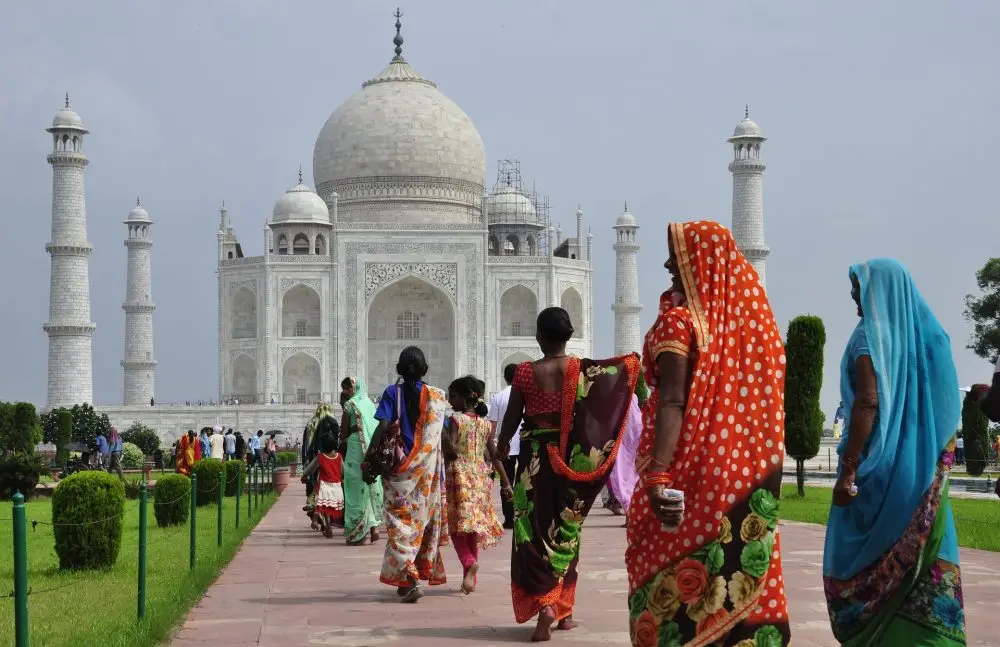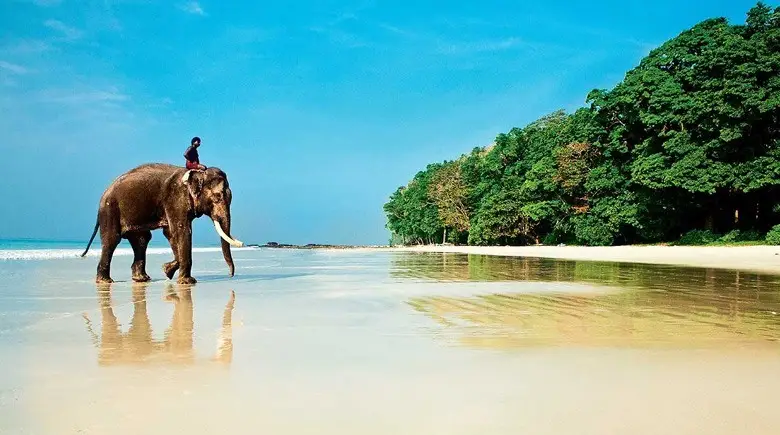India demonstrates different views on life to a tourist. On the one hand, there is ancient philosophy, a rich culture, warm climate, exotic food, and immeasurable spiritual heritage. On the other hand, there is dense poverty, dirt, chaos, unstable hygiene, and high risks for an unadapted organism. Therefore, the question arises whether it is worth going to India for a vacation. The country is unlike any other destination, so a trip there leaves vivid, conflicting impressions that shape one’s attitude towards it forever. Let’s talk about it in more detail in the article so that you can make a decision about the trip.
Before deciding whether it’s worth going to India for a vacation, one should consider the richness of its spiritual background. The country is permeated with Hinduism, with a religious undertone in every action, from food to gestures. Behavior, habits, communication style – everything is subject to cultural norms.

Distinctive features:
Hinduism defines the festive calendar, external appearance, family structure;
streets of cities are filled with processions, rituals, aromas of incense;
each state preserves unique customs, language, and gastronomic tradition.
The peculiarities of traveling to India include direct contact with philosophical concepts such as samsara, dharma, karma. They become not just theory but everyday practice.
The question of whether to go to India for a vacation cannot be answered without considering the emotional factor. From the first moments, the country literally assaults the senses – with noise, colors, the density of people. Landscapes and cities are filled with colors, scents, sounds. The exuberance of life and its vulnerability collide at one point.
Psychological aspect:
shock from chaos on the roads;
alternation of architectural masterpieces with slums;
people capable of boundless hospitality and complete indifference simultaneously.
Such impressions provoke either sharp rejection or genuine love for the country.
Whether it’s worth going to India for a vacation depends on how one perceives the pros and cons as challenges or advantages.
Pros:
unique cultural and architectural heritage;
exotic cuisine and affordable prices;
numerous resorts – from Goa to Kerala;
opportunities for Ayurvedic rejuvenation;
high level of spiritual practices.
Cons:
dirt and chaos in India on every corner, including train stations and markets;
risk of gastrointestinal infections and poisoning;
low hygiene standards in public places;
difficulties in moving on roads due to intense traffic;
language barrier outside tourist areas.
A traveler either gains a transformative experience or a cultural shock.
Whether it’s worth going to India for a vacation is a question related to the willingness to accept different standards of communication and taste. Indians communicate openly, often crossing personal boundaries, smiling, helping, but rarely adhering to European norms of politeness. Service can vary from impeccable to chaotic.
Gastronomic context:
predominance of spicy dishes, hot sauces, and legumes;
widespread use of palm oil and cheap spices;
often lacking sanitary control in street trading;
standard – vegetarianism, meat is rare.
Food is both a part of culture and a source of risk. A tourist has to adapt their diet to the capabilities of their own digestive system.
When planning a route, one should prepare in advance. Whether it’s worth going to India for a vacation depends on how seriously the traveler takes care of their health.
Risks:
heat strokes when visiting central and southern states;
risk of insect bites and malaria;
lack of familiar pharmacies and medications.
Measures:
vaccination before the trip (hepatitis A, typhoid fever);
consistent use of bottled water;
hand hygiene – mandatory before each meal.
Safety requires attention – pickpockets are active in crowded places, especially at train stations and markets.
India places special demands on mobility. Features:
traffic – left-hand, chaotic, without rules;
tuk-tuks, rickshaws, motorcycles, and buses create a structureless flow;
railway tickets – in short supply, the electronic system is complex for newcomers.
Trade is a separate layer of culture. Negotiations are an essential part of the process. Shops, stalls, markets operate without fixed prices. Customs require bargaining; otherwise, the seller perceives the buyer as naive.
The festive culture of the country creates a unique rhythm. Whether it’s worth going to India for a vacation during Holi, Diwali, or Pongal depends on the desire to immerse oneself in mass celebrations colored with spiritual meanings.
Holiday formats:
Holi – the festival of colors, accompanied by mass revelry.
Diwali – night of lights and purification rituals.
Navratri – nine-day worship of the goddess Durga with dances and rituals.
Participation in religious events requires respect for Hinduism. Photos, behavior, clothing should correspond to local expectations.
Goa is a special zone, different from the rest of India. Conditions:
North Goa – noisy, youthful, oriented towards parties.
South Goa – calm, with good hotels and a relaxing atmosphere.
States of Kerala and Tamil Nadu offer Ayurvedic programs, tranquility, and greenery.

A tourist gets a vacation unburdened by the shock of cultural differences. Nature, ocean, fruits, and minimal stress levels allow for rejuvenation.
The decision depends on the goals, readiness for contrasts, and openness to new lifestyles. It’s not just a trip but an internal route that can leave a mark for years to come. If you are looking for something more than just a beach vacation and are ready for deep impressions, India promises to be an unforgettable adventure, revealing new facets of the world and yourself.

The land of Hindus remains one of the most colourful in the world. The location attracts tourists with its versatility, ancient history and vibrant culture. Along with its popularity, many people still perceive India through the prism of stereotypes that often do not correspond to reality. Let’s take a detailed look at the real features …

India’s tourist geography encompasses coastal zones, mountain ranges, cultural valleys, desert oases and forest plateaus. India’s resorts are not limited to beaches alone. They form a mosaic picture where each region reveals its own climate, rhythm and holiday rituals. Ayurvedic practices, ocean walks, meditation retreats and trekking routes in the Himalayas are equally in demand …